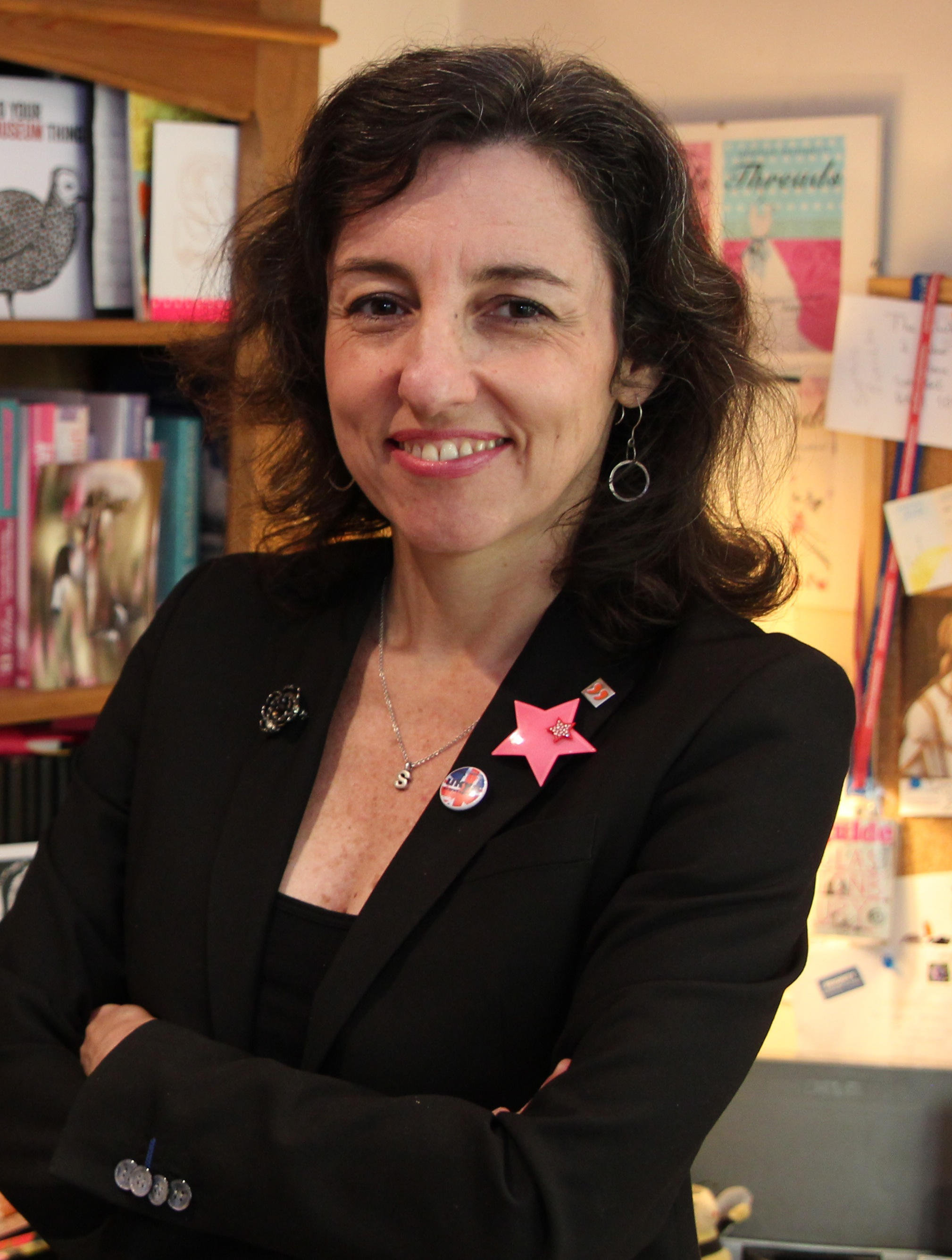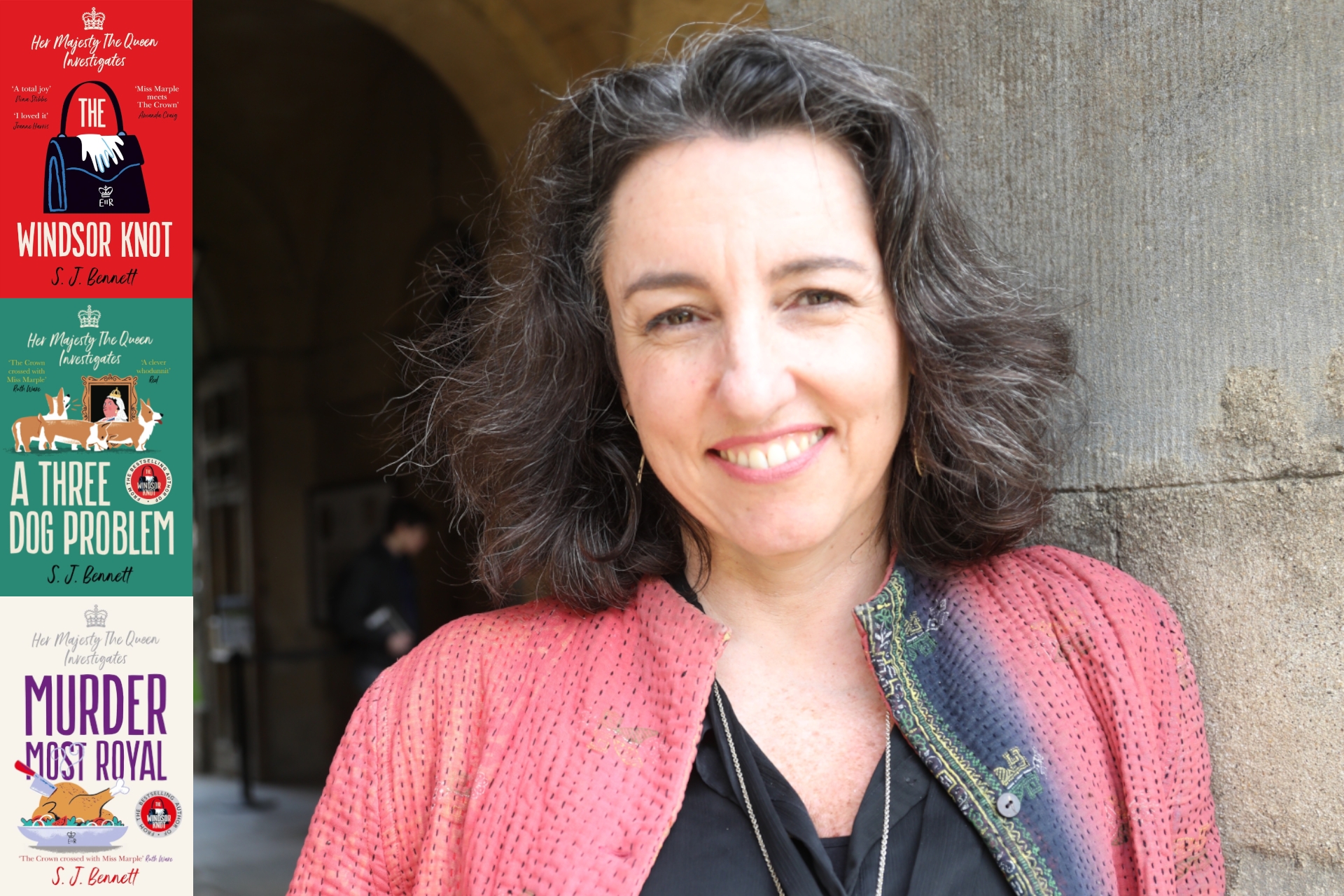We are so pleased to be able to welcome SJ Bennett as our Guest Editor. All of the novels in her wonderfully unique series with Queen Elizabeth II investigating murder and mayhem sit in our LoveReading Star Book section. There is a exquisitely subtle balance to be be discovered between fact and fiction in the world she has created. It is all too easy to imagine the Queen solving dastardly deeds, and the books sit as heartfelt and warm tribute to the much loved monarch. I have recommended these novels far and wide, with friends falling in love with the octogenarian investigator and her assistant private secretary Rozie. The series began with The Windsor Knot and I can remember my delight in discovering this compassionate, smart, and hugely entertaining collection that allows you to investigate behind the closed doors of the Royal Family.
The topic chosen by our Guest Editor is one that features beautifully within her own novels. I’ve only read (and adored) one of the books she recommends, so I have more to add to my ’to be read’ pile!
***
 SJ Bennett was born in Yorkshire and travelled the world as an army child. She had a varied career before her first novel was published when she was 42. Since then, her books have won awards, been optioned for TV, and have been translated into over 20 languages. She was once asked to interview for the role of Assistant Private Secretary to the Queen and still considers it the job that got away. A curious royal watcher for many years, she lives in London, where she can often be found haunting its palaces, museums, galleries and libraries. She currently writes the 'Her Majesty the Queen Investigates' series.
SJ Bennett was born in Yorkshire and travelled the world as an army child. She had a varied career before her first novel was published when she was 42. Since then, her books have won awards, been optioned for TV, and have been translated into over 20 languages. She was once asked to interview for the role of Assistant Private Secretary to the Queen and still considers it the job that got away. A curious royal watcher for many years, she lives in London, where she can often be found haunting its palaces, museums, galleries and libraries. She currently writes the 'Her Majesty the Queen Investigates' series.
***
Whenever I start a book in my series featuring Queen Elizabeth II, my initial inspiration comes from the setting. Depending on whether it takes place at Windsor, Buckingham Palace or the Sandringham estate, the plot may become a locked room mystery set in a castle with a thousand rooms, or a story of fraud and subterfuge in a palace full of priceless treasures, or a tale of simmering rivalries over how to use the land.
More than that, I want my reader to be able to stand on the parapet of the Round Tower at Windsor Castle and survey the landscape from the Great Park to the west, across to the Shard near the Tower of London in the east, twenty miles away. I want her to imagine the buckets placed at strategic points at Buckingham Palace, ready to catch the drips from leaking ceilings. I want her feet to sink into the soaking sand at Snettisham Beach in Norfolk, and her ears to ring with the cacophony of wading birds.
As a reader myself, I love it when a book takes me somewhere new. It could be anywhere: an occupied city, a moated castle or a ship in outer space. It could be a sci-fi adventure or a memoir, but the thing is, it delights in words and the scenes they conjure. As the summer sun fades and the nights draw in, these are the sort of books I look forward to immersing myself in.
I’m pretty bad at choosing for myself what I’ll enjoy. My favourite reads have usually come as surprise suggestions from one of my book clubs or family and friends. The books I’ve chosen here were discovered like this, and all create a sense of place in special ways. They’re a mixture of fact and fiction, because my mood and requirements vary, and I’m sure yours do too. Each one has a special place on my shelves now. I hope at least one of them finds its way to yours.
***
I Capture the Castle by Dodie Smith
Dodie Smith is more famous as the author of 101 Dalmatians. She wrote I Capture the Castle when she was living in California during the war, desperately missing her home country and fearful for it. The story is funny and lively, but there’s always a sense of something precious, in danger of being lost. Cassandra and Rose Mortmain live with their father and stepmother, Topaz – and very little money – in the tumbledown Godsent Castle, complete with a moat. The setting is perfectly romantic, but as the girls encounter two visiting American young men, the story becomes more prickly and complicated. Starting with one of my favourite lines in literature, ‘I write this sitting in the kitchen sink’, it’s a love letter to English eccentricity, a fever-dream of country living, a clear-eyed love story and a satire on the writing process itself.
Miss Dior: A Wartime Story of Courage and Couture by Justine Picardie
Justine Picardie, the fashion editor and biographer of Coco Chanel, went in search of Christian Dior, but ended up finding his sister, Catherine. I’m always thrilled when a fascinating woman finds her place in history, and so often the writer who puts her there is a woman herself. Catherine was Christian’s younger sister, his muse, and ultimately a successful rose farmer who grew the blooms used in Dior perfumes. Unlike Christian, who died in 1957, she lived to the ripe old age of ninety and died in 2008. But Catherine’s story wasn’t frothy fashion. She had been a heroic young Resistance fighter in the war, who was captured, tortured by the Gestapo and transported to Ravensbruck concentration camp. Justine Picardie has an almost spiritual connection with her subjects, combined with forensic research into the settings of their lives. She describes the horrors of the camps, particularly as experienced by women, and the society of wartime Paris in all its dangerous complexity. Later, she reveals how Dior and the couture industry helped to rebuild the city, and how Catherine worked to preserve her brother’s legacy. It’s a story that is both brutal and beautiful. I was gripped from start to finish and parts of it inspired the plot of the book I’m writing now.
Project Hail Mary by Andy Weir
When Andy Weir wrote The Martian (made into a film starring Matt Damon), he conducted extensive scientific research. The result was a book that was funny, compellingly page-turning and surprisingly accurate about what it would take to survive on Mars. Project Hail Mary takes the humour, the science and the stakes to a whole new level. When a high-school teacher called Rylan Grace wakes up on a spaceship, he can’t remember exactly how he came to be there, or where it’s going. He’s horrified to realise he’s heading into outer space. What follows is a thrilling adventure, a meditation on what it takes to save the world, and a hugely unexpected buddy caper. With Rylan, we come to know the ship intimately, with all its futuristic features and hidden vulnerabilities. As with all the best sci-fi, the story is ultimately about the art of being human. Everyone in our family loved it, from age fourteen to seventy-four.
Wilding by Isabella Tree
Some books change the world and I think this is one of them. When I first started writing Murder Most Royal, set at Sandringham, hardly anyone I spoke to knew what ‘rewilding’ was, and now it’s in the papers almost daily. That’s largely thanks to Isabella Tree and her campaign. The story of rewilding is often presented as a controversy about reclaiming the countryside for medieval forests prowled by wolves, versus farming and feeding ourselves – but it isn’t that at all. It’s a plea for biodiversity, written thrillingly by a pioneer who took massive risks with her own land to see if she could make things live and grow on it again. The Knepp estate is now home to beavers and storks, as well as thousands of species of birds and insects. It thrums with life. I’ve heard it myself, because I camped there a couple of summers ago and it was an unforgettable experience. Wilding is a celebration of the natural world and a call to action that still carries on the air.
Landmarks by Robert Macfarlane
Robert Macfarlane’s books were recommended to me by a friend who considers him the finest writer about the natural world living today. Shortlisted for the Wainwright Prize and the Samuel Johnson Prize, Landmarks is special to me because it’s a book about language. It celebrates the specific words used by locals to conjure up the world around them, be it ‘rionnach maoim’ – shadows cast on the moorland by clouds moving across the sky on a bright and windy day – or ‘muxy rout’ and ‘slunk’ as words for mud.
Macfarlane, a passionate and precise writer himself, discusses his admiration for others such as Nan Shepherd and Roger Deakin, who have brought the landscape to life. As well as extracts from their work, there are several glossaries of words gathered from around the world.
I also love The Lost Words, a children’s book that Macfarlane produced with Jackie Morris, to commemorate vocabulary that was being lost from the Oxford Junior Dictionary. To my horror, and theirs, these included simple words such as ‘acorn’, ‘kingfisher’ and ‘wren’. Each section is a beautiful ‘spell’ cast by one of these words, to conjure itself back into existence.
Landmarks has a similar quality. What I love most about it, though, is Macfarlane’s willingness to find the words to describe edge-of-town spaces that are scrubby, fenced and littered. These are as real to our experience of nature as the gorgeous landscape of a Highland hilltop. In order to understand who we are, we need language for them both.







Comments (0)
Leave A Reply
You must be logged in to post a comment.